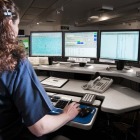
Sep 16, 2014
System design has always fascinated me. Throughout my career, it has become more and more obvious to me that design of an EMS system goes far beyond what trucks are on the road, and who is on each of them. Each aspect of the system from top to bottom effects every other aspect of it. Those who make the big bucks to make the decision need to find the best balance possible. Need more medic trucks? Push to run a “one and one” style system. Short on units? Investigate the possibility of first response, or downgrading calls to allow longer response times. While some look at unit hour utilization and time on task as two of their biggest determinant for the effectiveness of their system it is starting to become apparent to me that much of the success of an EMS system starts at its base when that phone is answered and those first first units are dispatched.
Both major systems that I have worked in have utilized Emergency Medical Dispatch (EMD) and Priority Medical Dispatch (PMD) to determine response. Or at least they have claimed to. I feel like at this point in my career, I have experienced both ends of the spectrum and I have seen both the good and the bad.
Previously, the quality of phone triage was poor. Even if the right questions were asked, much of the determinant of response rested in the hands of a dispatcher who would read the notes of the call, shoot from the hip, and make the decision based on what they felt was going on. If the call was for a pediatric patient, for example, the response would almost always be with lights and sirens for no other reason than “because its a kid.” Calls were rushed and pushed to the dispatcher’s screen in a minute or less in an effort to churn them out.
The system I am currently working in has a perception that they take a bit more time when prioritizing calls. They will sit on the waiting screen sometimes for as much as two or three minutes to allow the dispatchers to make the best decision possible in order to make sure the proper units are sent. Although the process is performed at greater detail than I have seen it previously, some calls still leave us shaking our collective heads. It is tough to understand how a complaint makes it to an ALS response, but it happens. And in reality, in the world of PMD that head scratching is supposed to happen.
Either way that you cut it, over triage exists, and it should exist. One cannot expect a system like PMD that, as Justin Schorr likes to put it, depends on the least informed and often most hysterical person (the caller) talks to the person in the chain with the least training (the dispatcher) to determine who goes and how fast they go. But even with over triage, the distinct differences of each system has an impact on the number of paramedic units utilized, how they are utilized, and who responds with them.
The ratio of units to population is drastically different in the two systems I’ve worked in. In Massachusetts, at peak, we would run a minimum of nine paramedic units for a population of 150,000. That is one paramedic unit for every 16,000 people. In my new system at peak we run nine paramedic units for about 650,000 people, or one paramedic unit for every 72,000 people. I have discussed these numbers before in regards to skill dilution, but they apply here as well.
In Massachusetts, a paramedic unit goes to virtually every emergency call with few exceptions. Partially because the contract wants a “paramedic available to every citizen who calls 9-1-1” and partially because of, in my opinion, a weaker PMD system. If calls were better triaged then maybe things could be done differently, but to compensate a greater volume of paramedics is needed. Balance is achieved by “making more paramedic units available.” In my new system, the balance is achieved by a more rigorous QA/QI process when it comes to the people answering the phone.
The point is, when a system starts to struggle or seems to be overwhelmed, the answer to the problem is not always “we need to put more trucks on.” Or “we are understaffed.” I have heard that more times than I can count. If true ALS emergencies are up, then yes, that might be the case, but quite often there are other answers that will allow a system to bert utilize the units at their disposal. Sometimes realizing that response times to many calls don’t matter as much as we think, or focusing on better utilization of non-ALS resources can make a difference.
At this point in my career, I am of the opinion that “every call should have an ALS response” is the equivalent of “every patient should go straight to the cath lab when they get to the hospital regardless of complaint.” They probably are not having an MI, but they might be, so we had better be safe, right? The answer is not saturating systems with paramedics, the answer is strengthening the base of a system. That means better QA/QI for dispatchers and call takers, and more rigorous assessment training for BLS providers and first responders. Over triage is always going to exist. It’s not going anywhere, but we can sure shift the ratios by taking the right steps.
The world of EMS is like a planet with a very delicate ecosystem. One little adjustment to one variable in the wrong direction could drastically effect everything else around it. The stability of a system goes far beyond how many units are on the road. Remember that next time you are feeling overwhelmed.
